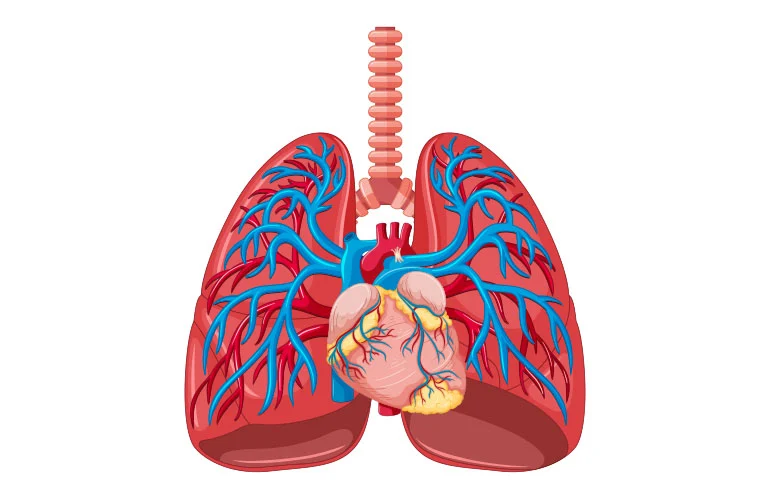- Home
- Departments
Departments Of Pulmonary Hypertension
Pulmonary- HypertensionPulmonary hypertension (PH) is a serious and progressive condition characterized by elevated blood pressure in the arteries of the lungs (pulmonary arteries). This increased pressure makes it harder for the heart to pump blood through the lungs, leading to strain on the heart muscle and potentially life-threatening complications.
Key Features of Pulmonary Hypertension:
Increased Pulmonary Arterial Pressure: In pulmonary hypertension, the pressure in the pulmonary arteries becomes abnormally high. This can occur due to various factors, including narrowing or constriction of the pulmonary arteries, thickening or stiffening of the arterial walls, or increased blood flow resistance within the pulmonary circulation.
Pulmonary Vascular Remodeling: Chronic elevation of pulmonary arterial pressure can lead to structural changes in the blood vessels of the lungs, including remodeling of the vessel walls, proliferation of smooth muscle cells, and deposition of collagen and other extracellular matrix proteins. These changes further contribute to increased vascular resistance and worsening pulmonary hypertension.
Symptoms and Clinical Manifestations: The symptoms of pulmonary hypertension can vary depending on the severity of the condition and the underlying cause. Common symptoms may include shortness of breath (dyspnea), especially during exertion, fatigue, chest pain or discomfort, dizziness or fainting (syncope), swelling of the legs or abdomen (edema), and bluish discoloration of the lips or skin (cyanosis).
Classification and Causes: Pulmonary hypertension is classified into different groups based on the underlying cause and pathophysiology. The World Health Organization (WHO) classification system distinguishes five main groups of pulmonary hypertension, including pulmonary arterial hypertension (PAH), pulmonary hypertension due to left heart disease, pulmonary hypertension due to lung diseases and/or hypoxia, chronic thromboembolic pulmonary hypertension (CTEPH), and pulmonary hypertension with unclear or multifactorial mechanisms. PAH is a specific form of pulmonary hypertension characterized by narrowing of the small arteries in the lungs, leading to increased pulmonary vascular resistance and elevated pulmonary arterial pressure.
Diagnosis and Management: Diagnosis of pulmonary hypertension typically involves a combination of medical history, physical examination, imaging studies (such as echocardiography, chest X-ray, or CT scan), pulmonary function tests, and right heart catheterization to directly measure pulmonary artery pressures. Treatment of pulmonary hypertension aims to improve symptoms, slow disease progression, and improve quality of life. Therapeutic approaches may include medications to dilate the pulmonary arteries (vasodilators), reduce blood clotting (anticoagulants), remove or dissolve blood clots (thrombolytics), and manage underlying conditions or contributing factors.
Overall, pulmonary hypertension is a complex and potentially life-threatening condition characterized by elevated blood pressure in the pulmonary arteries. Early diagnosis, comprehensive evaluation, and individualized management are essential for optimizing outcomes and improving prognosis in individuals with pulmonary hypertension.

